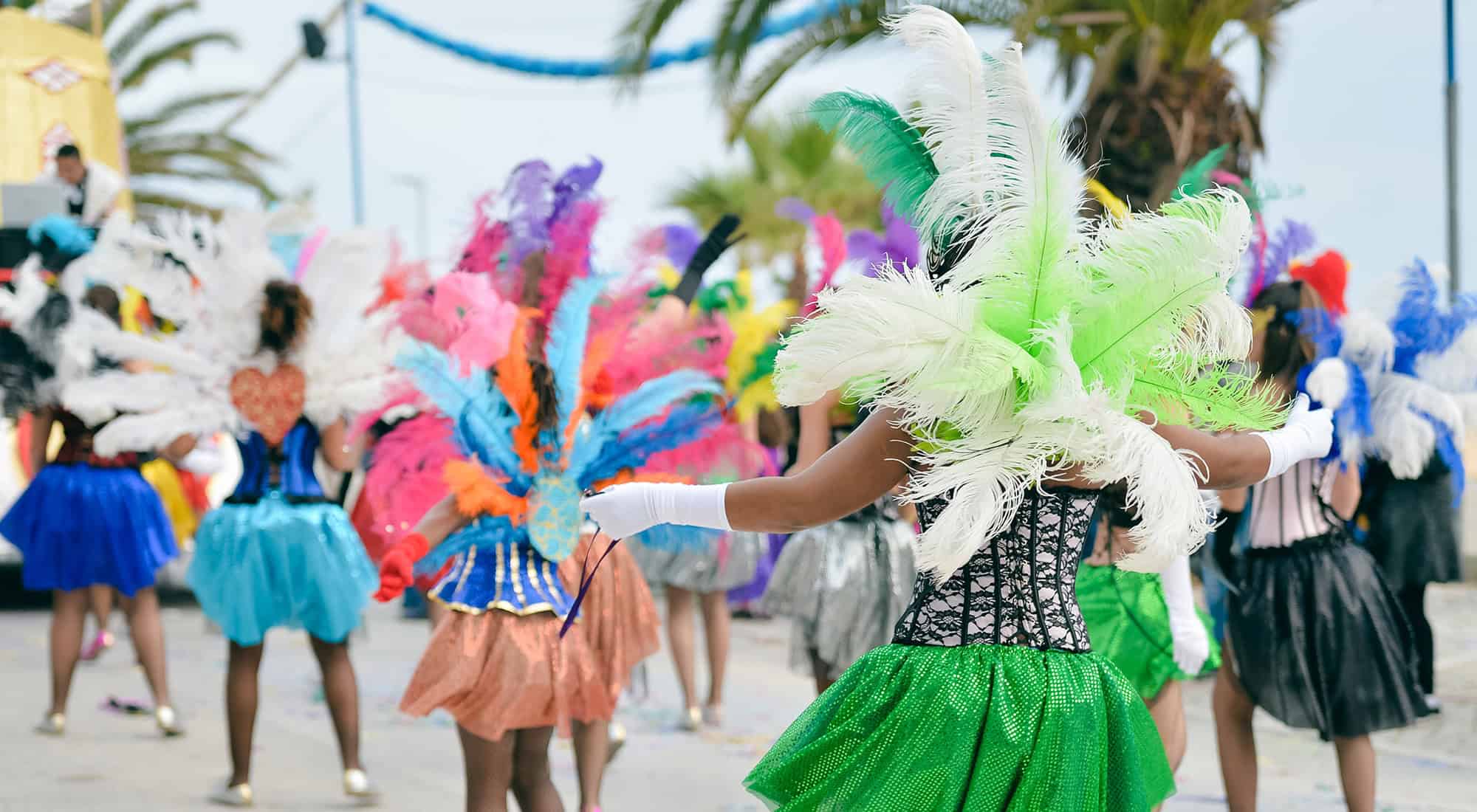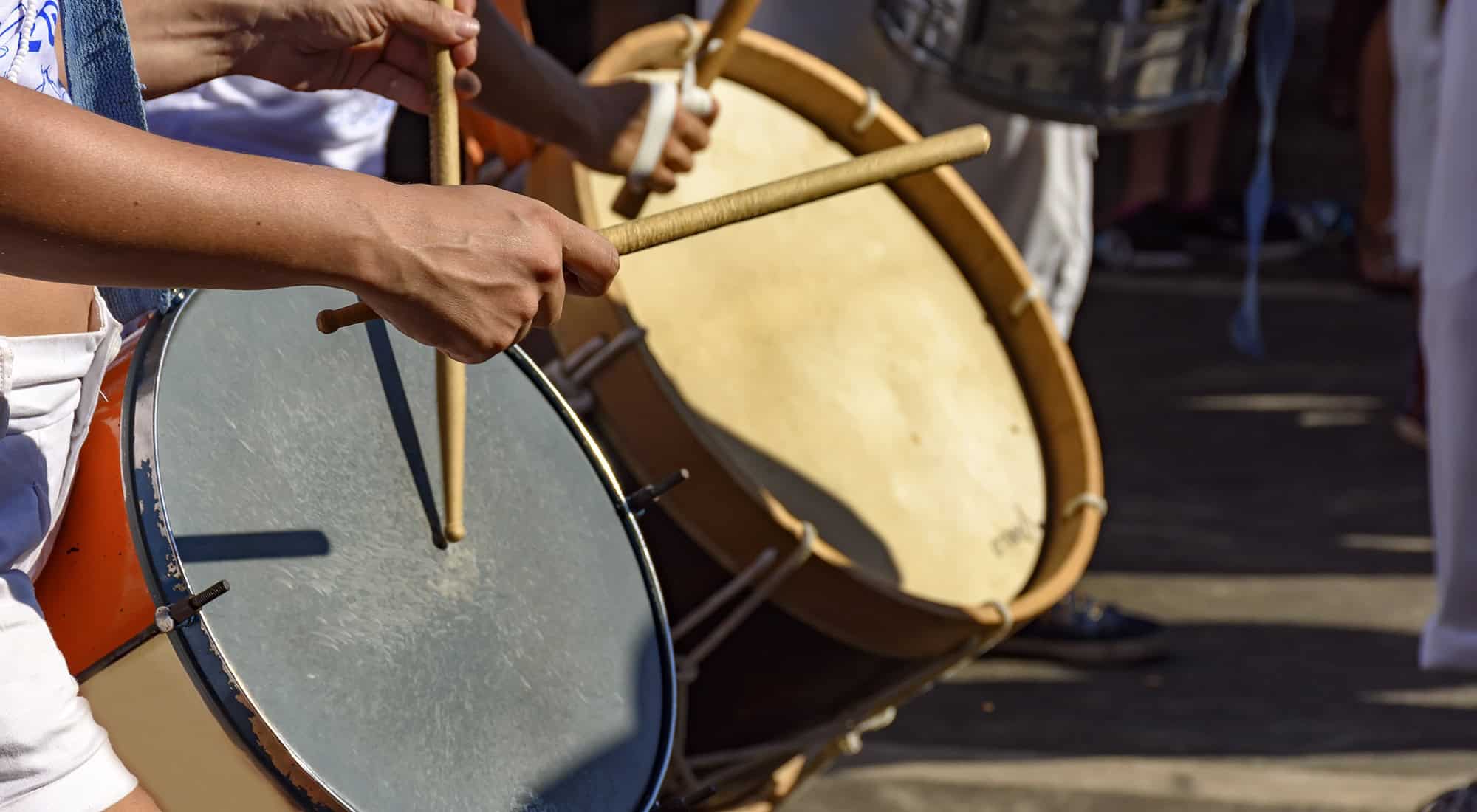Carnaval in Rio is as spectacular as its reputation suggests – a riot of colour, flamboyance and artistry unrivalled outside Brazil.
On the Friday before Shrove Tuesday, the mayor of Rio hands the keys of the city to Rei Momo, the Lord of Misrule, signifying the start of a five-day party. Imagination runs riot, social barriers are broken and the main avenues, full of people and children wearing fancy dress, are colourfully lit. Areas throughout the city such as the Terreirão de Samba in Praça Onze are used for shows, music and dancing. Spectacularly dressed carnival groups throng around the Sambódromo (Oscar Niemeyer’s purpose-built stadium) strutting, drumming and singing in preparation for their parade. And there are blocos (parades) throughout the city, in neighbourhoods such as Santa Teresa and Ipanema. It can be ghostly quiet in the southern beach zones during this time.
Unlike Salvador, which remains a wild street party, Rio’s Carnaval is a designated parade, taking place over a number of days and contained within the Sambódromo stadium. Alongside the parade are a number of bailes (parties) held within designated clubs, street shows like those held around Praça Onze.
There are numerous samba schools in Rio, which are divided into two leagues before they parade through the Sambódromo. The 14 schools of the Grupo Especial parade on Sunday and Monday while the Grupos de Acesso A and B parade on Saturday and Friday respectively. There is also a mirins parade (younger members of the established schools) on Tuesday. Judging takes place on Wednesday afternoon and the winners of the groups parade again on the following Saturday. Tickets to these winners’ parades are always easy to get hold of even when all others are sold out.
Every school comprises 2500-6000 participants divided into alas (wings) each with a different costume and parading on or around five to nine carros alegóricos (beautifully designed floats). Each school chooses an enredo (theme) and composes a samba that is a poetic, rhythmic and catchy expression of the theme. The enredo is further developed through the design of the floats and costumes. A bateria (percussion wing) maintains a reverberating beat that must keep the entire school, and the audience, dancing throughout the parade. Each procession follows a set order with the first to appear being the comissão de frente (a choreographed group that presents the school and the theme to the public). Next comes the abre alas (a magnificent float usually bearing the name or symbol of the school). The alas and other floats follow as well as porta bandeiras (flag bearers) and mestre salas (couples dressed in 18th-century costumes bearing the school’s flag), and passistas (groups traditionally of mulata dancers). An ala of baianas (elderly women with circular skirts that swirl as they dance) is always included as is the velha guarda (distinguished members of the school) who close the parade. Schools are given between 65 and 80 minutes and lose points for failing to keep within this time. Judges award points to each school for components of their procession, such as costume, music and design, and make deductions for lack of energy, enthusiasm or discipline. The winners of the Grupos de Acesso are promoted to the next higher group while the losers, including those of the Grupo Especial, are relegated to the next lowest group. Competition is intense and the winners gain a monetary prize funded by the entrance fees.
The Carnaval parades are the culmination of months of intense activity by community groups, mostly in the city’s poorest districts. Rio’s bailes (fancy-dress balls) range from the sophisticated to the wild. The majority of clubs and hotels host at least one. The Copacabana Palace’s is elegant and expensive whilst the Scala club has licentious parties. It is not necessary to wear fancy dress; just join in, although you will feel more comfortable if you wear a minimum of clothing to the clubs, which are crowded, hot and rowdy. The most famous are the Red and Black Ball (Friday) and the Gay Ball (Tuesday) which are both televised. Venues for these vary.
Bandas and blocos can be found in all neighbourhoods and some of the most popular and entertaining are: Cordão do Bola Preta (meets at 0900 on Saturday, Rua 13 de Maio 13, Centro); Simpatia é Quase Amor (meets at 1600 on Sunday, Praça General Osório, Ipanema) and the transvestite Banda da Ipanema (meets at 1600 on Saturday and Tuesday, Praça General Osorio, Ipanema). It is necessary to join a bloco in advance to receive their distinctive T-shirts, but anyone can join in with the bandas. The expensive hotels offer special Carnaval breakfasts from 0530.
Even if you’re coming independently it’s wise to book your carnival tickets in advance with a tour operator like Brazil Revealed or Journey Latin America.










